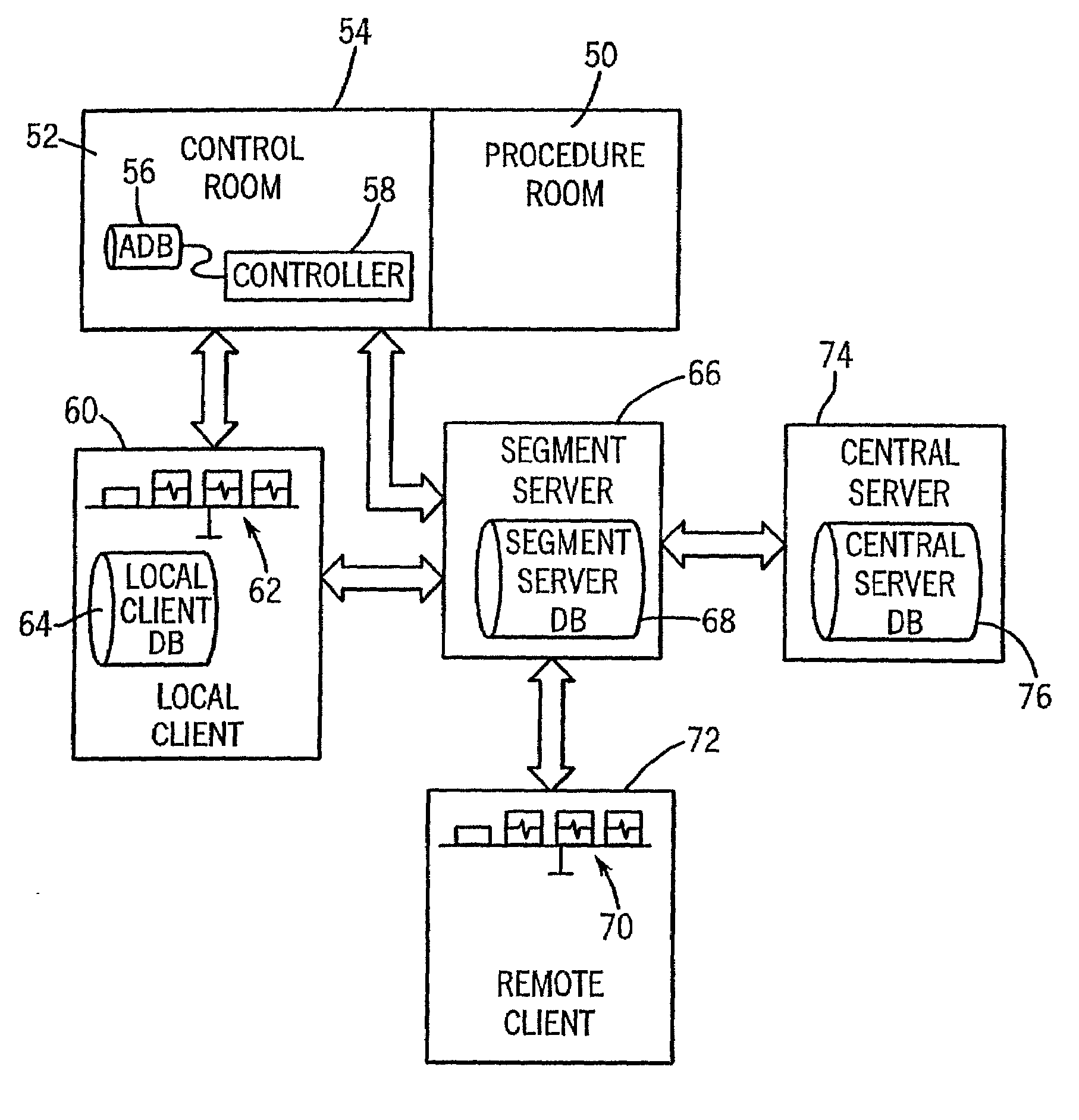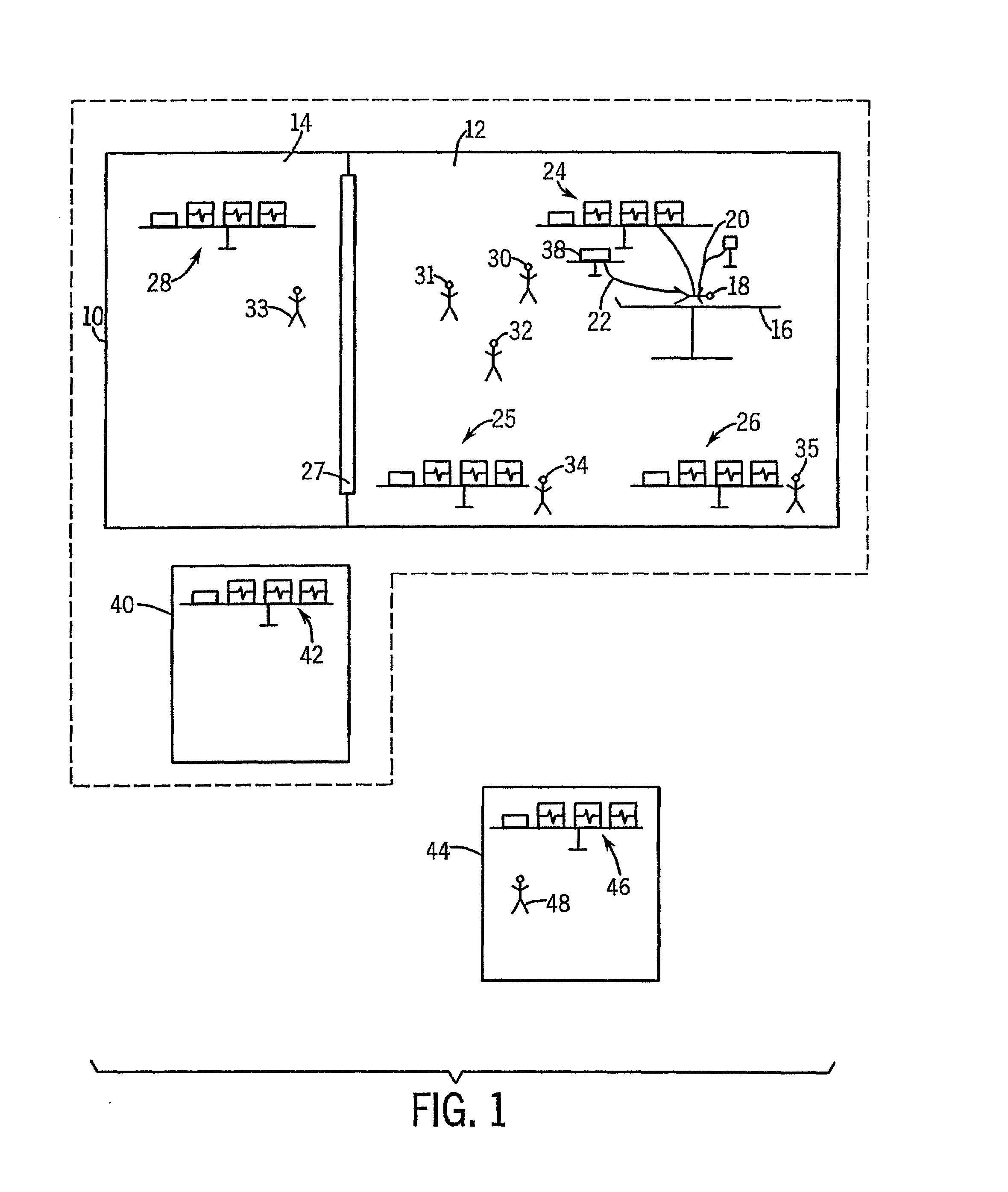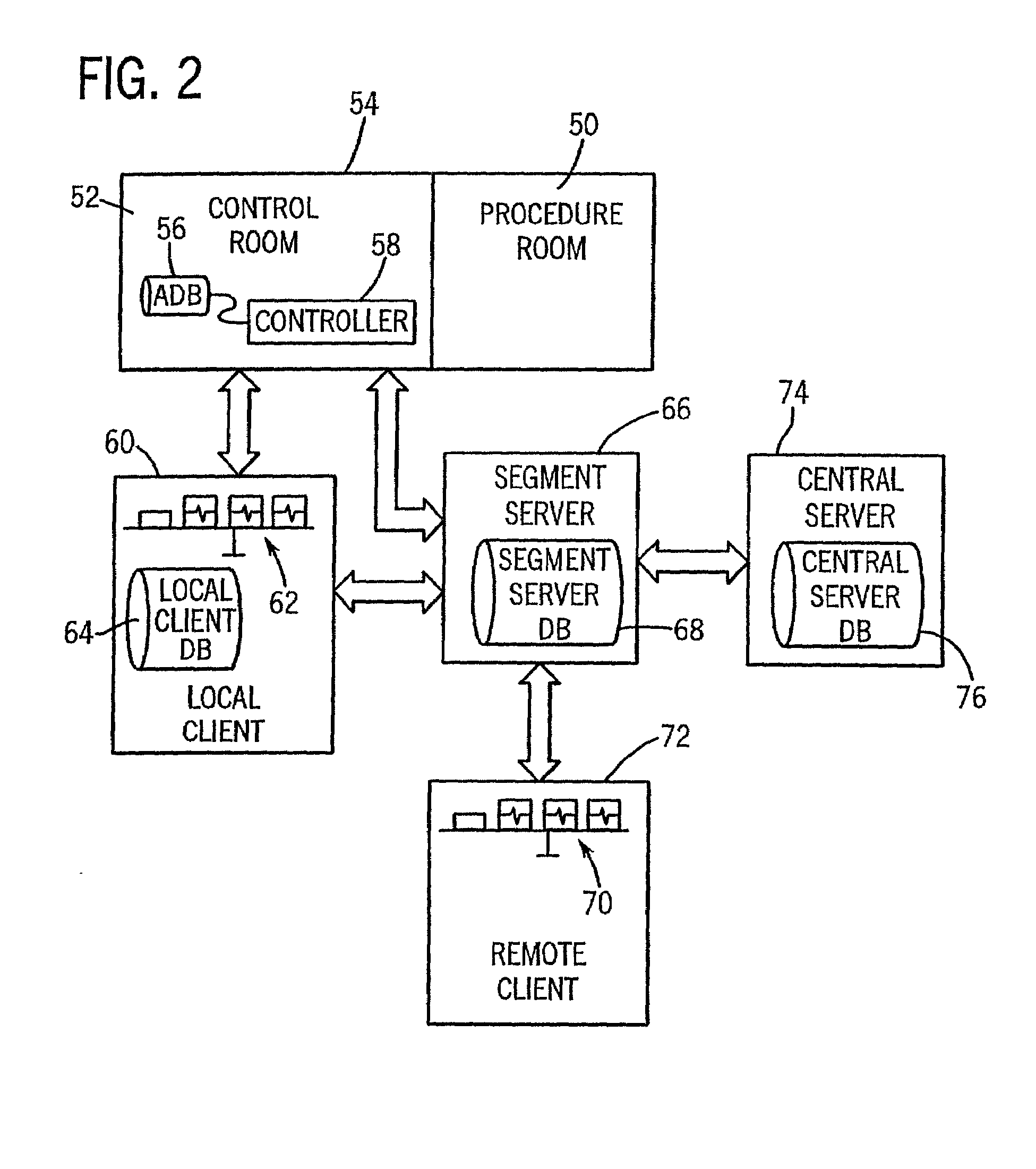Distributed multi-user replication-based system for real time data access during cardiology procedures
a multi-user, real-time data technology, applied in the direction of catheters, instruments, therapy, etc., can solve the problems of abnormally frequent contraction of the ventricle, disruption of the normal rhythmic contraction of the chamber of the heart, and potentially life-threatening effects
- Summary
- Abstract
- Description
- Claims
- Application Information
AI Technical Summary
Problems solved by technology
Method used
Image
Examples
Embodiment Construction
[0021]As previously discussed, a cardiac catheterization lab may be used by multiple clinicians to perform procedures such as an EPS or catheter ablation. FIG. 1 illustrates one embodiment of a catheterization lab 10. The catheterization lab 10 generally includes a procedure room 12 and a control room 14. The procedure room 12 is generally the room in which the physical catheterization procedure takes place. The control room 14 is generally the room in which the control of the data gathering and display takes place. The procedure room 12 may include a bed 16 in which a patient 18 is placed during a cardiac catheterization procedure such as an EPS procedure or catheter ablation. An intravenous (IV) line 20 may be placed in the arm of the patient 18 to provide a means of dispensing medication during the procedure. Catheters 22 may be inserted through the femoral vein in the groin of the patient 18. An x-ray imaging system (not shown) may be used to guide the catheter 22 into the appro...
PUM
 Login to View More
Login to View More Abstract
Description
Claims
Application Information
 Login to View More
Login to View More - R&D
- Intellectual Property
- Life Sciences
- Materials
- Tech Scout
- Unparalleled Data Quality
- Higher Quality Content
- 60% Fewer Hallucinations
Browse by: Latest US Patents, China's latest patents, Technical Efficacy Thesaurus, Application Domain, Technology Topic, Popular Technical Reports.
© 2025 PatSnap. All rights reserved.Legal|Privacy policy|Modern Slavery Act Transparency Statement|Sitemap|About US| Contact US: help@patsnap.com



